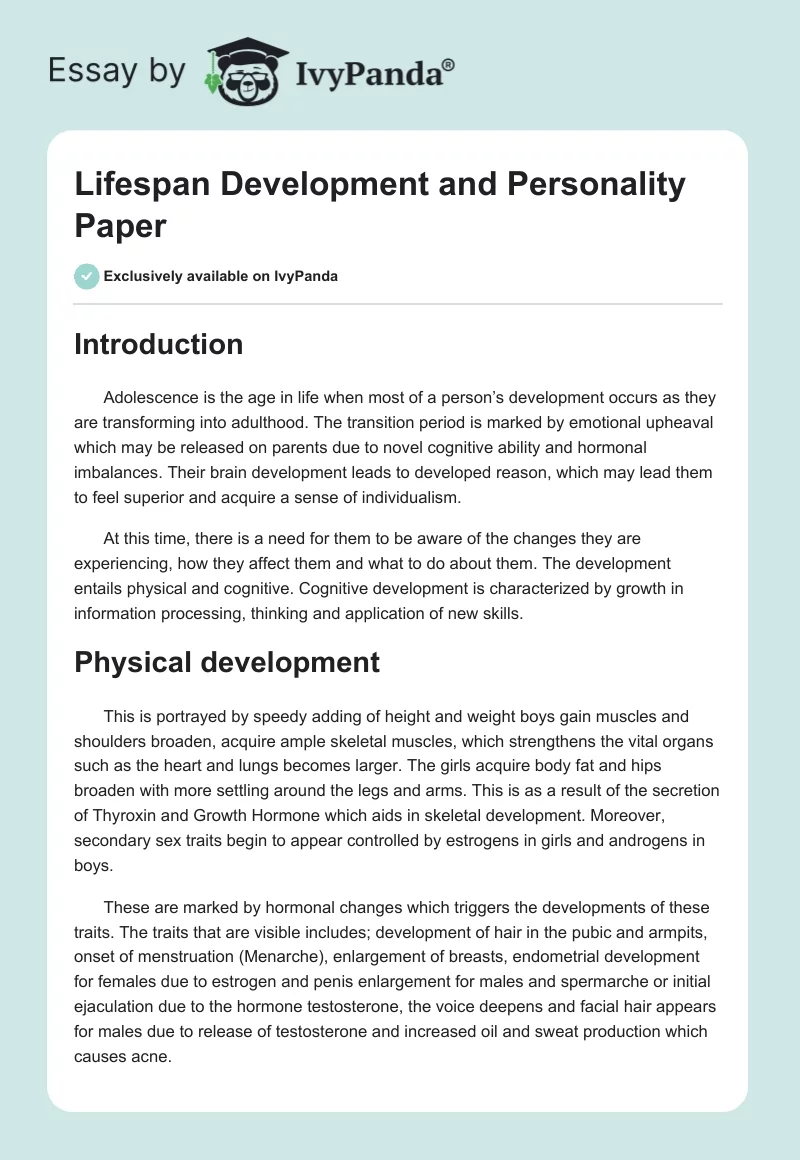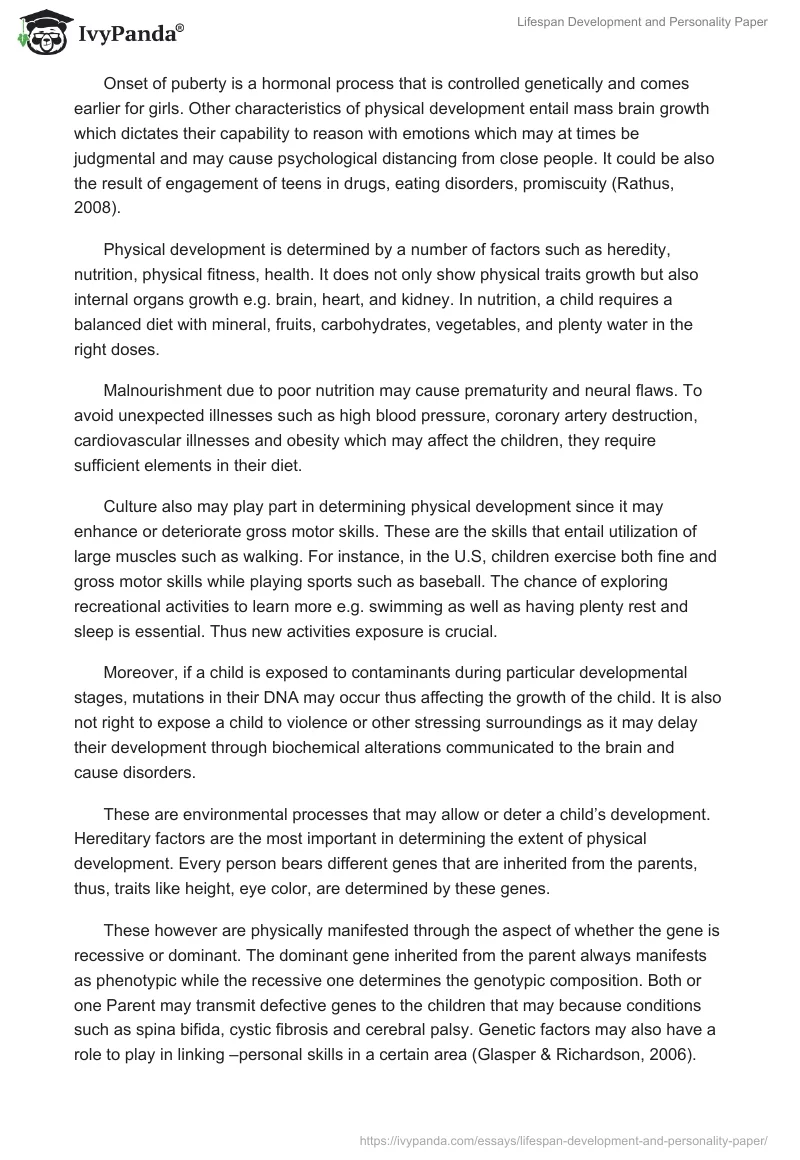Introduction
Adolescence is the age in life when most of a person’s development occurs as they are transforming into adulthood. The transition period is marked by emotional upheaval which may be released on parents due to novel cognitive ability and hormonal imbalances. Their brain development leads to developed reason, which may lead them to feel superior and acquire a sense of individualism.
At this time, there is a need for them to be aware of the changes they are experiencing, how they affect them and what to do about them. The development entails physical and cognitive. Cognitive development is characterized by growth in information processing, thinking and application of new skills.
Physical development
This is portrayed by speedy adding of height and weight boys gain muscles and shoulders broaden, acquire ample skeletal muscles, which strengthens the vital organs such as the heart and lungs becomes larger. The girls acquire body fat and hips broaden with more settling around the legs and arms. This is as a result of the secretion of Thyroxin and Growth Hormone which aids in skeletal development. Moreover, secondary sex traits begin to appear controlled by estrogens in girls and androgens in boys.
These are marked by hormonal changes which triggers the developments of these traits. The traits that are visible includes; development of hair in the pubic and armpits, onset of menstruation (Menarche), enlargement of breasts, endometrial development for females due to estrogen and penis enlargement for males and spermarche or initial ejaculation due to the hormone testosterone, the voice deepens and facial hair appears for males due to release of testosterone and increased oil and sweat production which causes acne.
Onset of puberty is a hormonal process that is controlled genetically and comes earlier for girls. Other characteristics of physical development entail mass brain growth which dictates their capability to reason with emotions which may at times be judgmental and may cause psychological distancing from close people. It could be also the result of engagement of teens in drugs, eating disorders, promiscuity (Rathus, 2008).
Physical development is determined by a number of factors such as heredity, nutrition, physical fitness, health. It does not only show physical traits growth but also internal organs growth e.g. brain, heart, and kidney. In nutrition, a child requires a balanced diet with mineral, fruits, carbohydrates, vegetables, and plenty water in the right doses.
Malnourishment due to poor nutrition may cause prematurity and neural flaws. To avoid unexpected illnesses such as high blood pressure, coronary artery destruction, cardiovascular illnesses and obesity which may affect the children, they require sufficient elements in their diet.
Culture also may play part in determining physical development since it may enhance or deteriorate gross motor skills. These are the skills that entail utilization of large muscles such as walking. For instance, in the U.S, children exercise both fine and gross motor skills while playing sports such as baseball. The chance of exploring recreational activities to learn more e.g. swimming as well as having plenty rest and sleep is essential. Thus new activities exposure is crucial.
Moreover, if a child is exposed to contaminants during particular developmental stages, mutations in their DNA may occur thus affecting the growth of the child. It is also not right to expose a child to violence or other stressing surroundings as it may delay their development through biochemical alterations communicated to the brain and cause disorders.
These are environmental processes that may allow or deter a child’s development. Hereditary factors are the most important in determining the extent of physical development. Every person bears different genes that are inherited from the parents, thus, traits like height, eye color, are determined by these genes.
These however are physically manifested through the aspect of whether the gene is recessive or dominant. The dominant gene inherited from the parent always manifests as phenotypic while the recessive one determines the genotypic composition. Both or one Parent may transmit defective genes to the children that may because conditions such as spina bifida, cystic fibrosis and cerebral palsy. Genetic factors may also have a role to play in linking –personal skills in a certain area (Glasper & Richardson, 2006).
Cognitive Development
Cognitive development is marked by increased reasoning ability with an open, critical mind. This includes logical thinking with a hypothetical perspective and developing answers for such. Other than reasoning skills, abstract thoughts also develop. Adolescents develop such level of thinking which is followed by such traits as trust, love and spirituality. They also realize meta-cognition where they are able to evaluate their thoughts, feelings and others perceptions of themselves.
By doing so, adolescents exhibit a high degree of self consciousness where they think that others are always concerned of their welfare and that they are unique. According to the psychologist Jean Piaget, adolescents lie between the formal operational stages of cognitive development in which intelligence is portrayed by abstract thoughts that allow them to be egocentric. Independent thoughts are adapted in this stage which increases their ability to grasp complex concepts such as philosophy.
That way, their learning ability is enhanced in which they apply to given scenarios such as occupation and education. Cognitive transition from childhood to adolescents shows a higher degree and intricate of advancement. This is manifested through unlimited and realistic thinking. Their abstract thoughts are also enhanced as well as their meta-cognition to display advanced introspection and personal realization.
This arms the individuals to become intellectuals but may also result to egocentrism. Finally, adolescents become multidimensional to critically evaluate situations in a complex sophisticated manner which is essential in aiding them to see things from a compound perspective while weighing all possibilities. This is important in helping them weigh things relatively and avoids taking then as absolute facts although this aspect may lead them to always question authorities (Steinberg, 2005).
Cognitive development is determined by various hereditary and environmental issues. When it is impaired there are psychological conditions that results like Autism. Learning disability is also another condition where an individual is unable to interpret facts because they cannot transmit it to the appropriate brain sections.
It is illustrated with inability to become conversant with languages, loss of concentration and lack of coordination which is manifest in declined studies. These individuals may also lack hearing abilities or being subject to emotional distress. Interaction of the environment and genetic factors are the prime cause of learning disabilities. Consequently a child may be bearing genes for such inabilities inherited from the parents but the problem only manifests when there is interplay with certain environmental factors.
For instance, parents may expose a child to appropriate experiences such as talking to them and allowing study materials as he or she grows which is essential in arming the child with necessary tools for self realization. Parents may also offer a challenging and supportive environment for a child to become confident and be aware of their strengths in relation to the society. If a disruption to cognitive developments in early stages may lead to a permanent damage on a child (Steinberg, 2005).
Theoretical perspectives
Social relationships are crucial for adolescents since they determine the extent of brain development. Children are able to formulate moral judgments as they interact socially. Emotions such as empathy, aiding and regarding others are part of moral development of a child.
The theoretical perspectives that explain child development are psychodynamic and maturational perspectives. A maturational perspective points out that the extent of neurological growth and the physiological growth are linked to hereditary factors that have a direct consequence on the advancement of a child’s physical potentials.
This deduction can be made in the instance when a child’s writing skills advances as he or she continues learning in school. This is due to enhancement of neurological factors that evidently proceeds and most significantly, as a child hits puberty where he or she physically develops. Besides, another theoretical perspective is the psychodynamic, which points out that a child such as an adolescent is subject to social judgments as determined by desires granted by violence and sexuality.
However they are also prompted by the requirement for a social involvement and recognition. To various developmental stages, a child is able to grasp how to apply their impulses in a socially productive manner. It is notable when an adolescent questions a teacher or a guardian’s authority or even punch a fellow student. As he gets the response due to his or her deeds he is able to find out how to handle the impulses in amore positive manner (Rathus, 2011).
References
Glasper, A. E. and Richardson J. (2006). A Textbook of Children’s and Young People’s Nursing. Philadelphia: Elsevier Health Sciences.
Rathus, S. (2008). Childhood and Adolescent: Voyages in Development. 3rd Ed. Belmont: Thomson Learning Inc.
Rathus, S. (2011). Childhood Voyages in Development.4th Ed. Belmont: Wadsworth Cengage Learning.
Steinberg, L. (2005). Cognitive and Affective Development in Adolescence. TRENDS in Cognitive Sciences Vol.9 No.2. Web.


